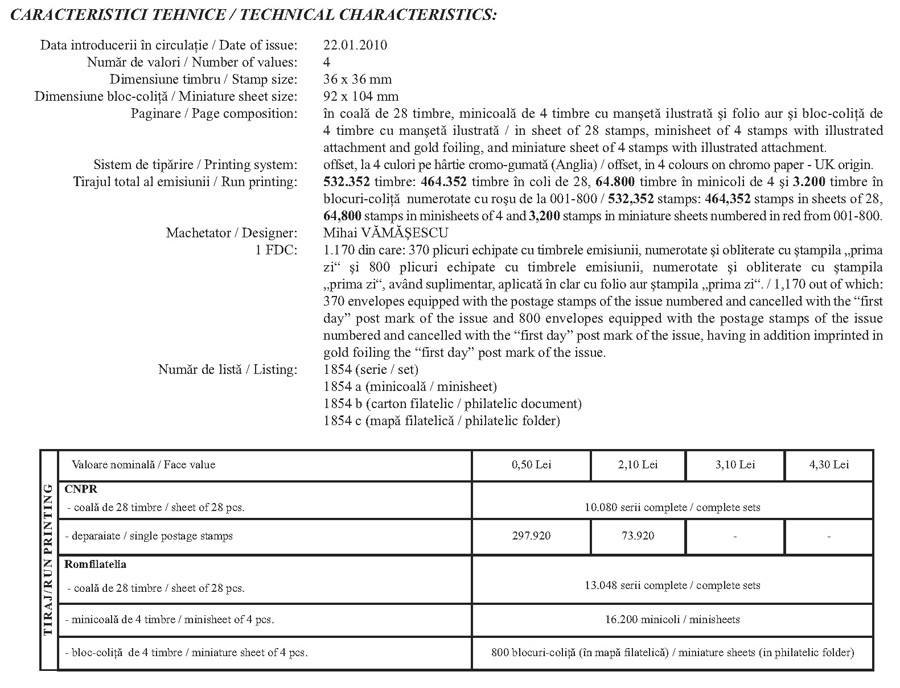 If bees disappeared off the surface of the globe then man would only have four years of life left.” (Albert Einstein)If bees disappeared off the surface of the globe then man would only have four years of life left.” (Albert Einstein)
If bees disappeared off the surface of the globe then man would only have four years of life left.” (Albert Einstein)If bees disappeared off the surface of the globe then man would only have four years of life left.” (Albert Einstein)
Since immemorial times, bees’ behaviour has inspired myths, legends, tales, poems and fables. At the same time the bee inspired love and was loved by both gods and human beings.
Bees have a vital role in the pollination (reproduction) of thousands of plants species. For 50 million years since they are present on the Earth, bees have contributed to the evolution of the vegetal kingdom, as it exists today.
Coming to all philatelists’ needs, Romfilatelia introduces into circulation the postage stamps issue “Honey Bees”.
The European honey bee (Apis mellifera mellifera) is shown on the stamp having a face value of RON 0.50.
This is a bee with a special resistance to winter’s cold and an increased tendency of defense against enemies. It collects a large volume of pollen and lives longer than other bees. It also has the capacity to fly long distances. This bee lives in France, Belgium, the Netherlands, Luxembourg, the Great Britain, Ireland, Norway, Sweden, Denmark, Germany, Poland, the Czech Republic, North of Switzerland, North-West of Austria, Belarus, North of Ukraine, Latvia, Lithuania, Estonia and Russia.
The Italian honey bee (Apis mellifera ligustica) is shown on the stamp having a face value of RON 2.10.
This bee spreads through North America, South America and Southern Europe. It is mild and produces honey in considerable amounts. It lives in large colonies needing more food resources to survive the winter.
The Slovenian honey bee (Apis mellifera carnica) is shown on the stamp having a face value of RON 3.10.
It is a sub-species of the European honey bee originating from Slovenia but it may be found in Austria, Hungary, Croatia, Bosnia and Herzegovina, Serbia and Romania.
The Caucasian honey bee (Apis mellifera caucasica) is shown on the stamp having a face value of RON 4.30. It is a larger bee than the average; it is mild and hard working. It is usually found in the Caucasus Mountains.
We warmly thank the Institute for Research and Development in Apiculture – Bucharest and “Grigore Antipa” Museum of Natural History for their support in the accomplishment of this postage stamps issue.
Issue date: 2010-01-22
















